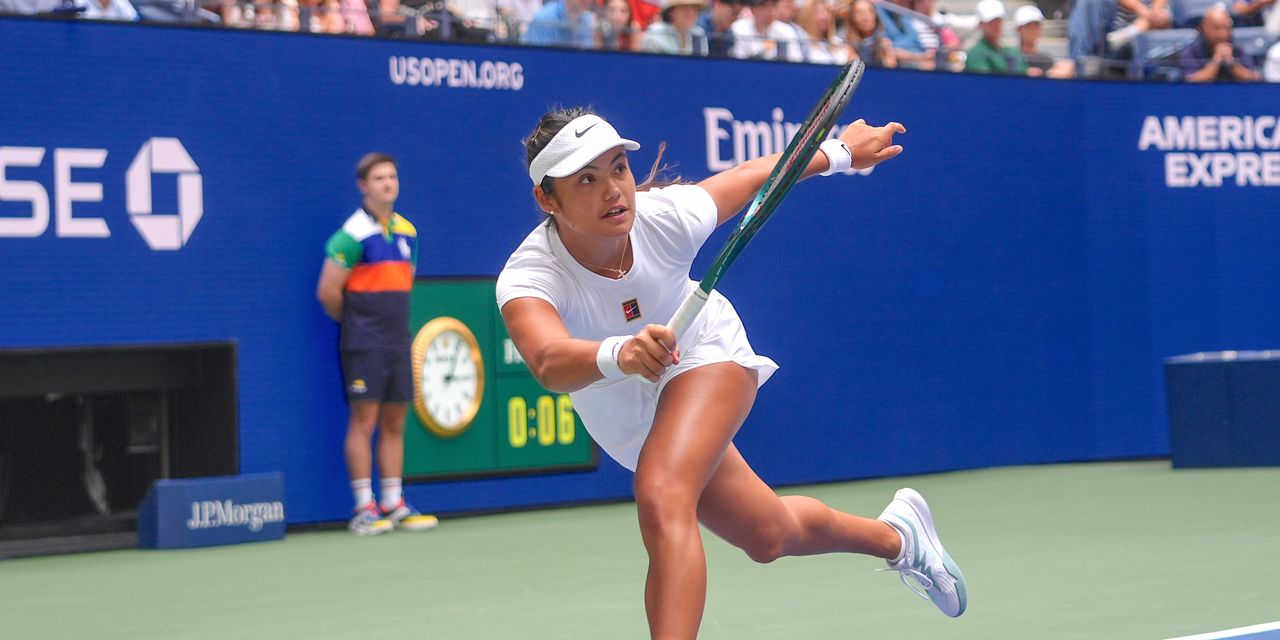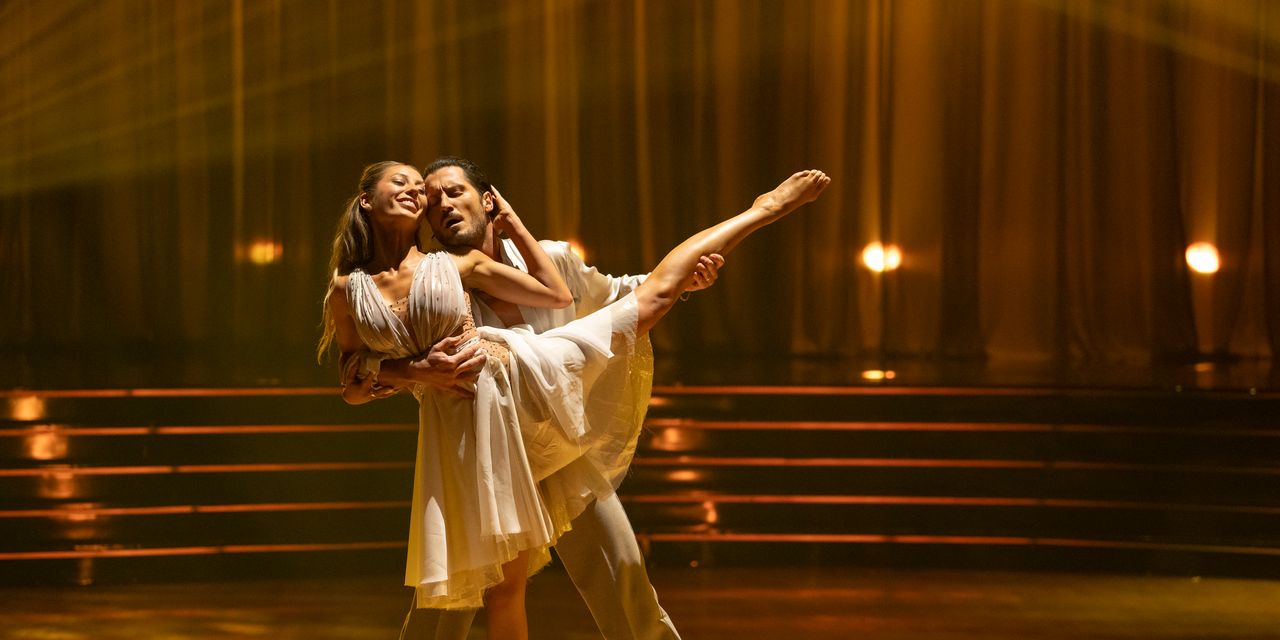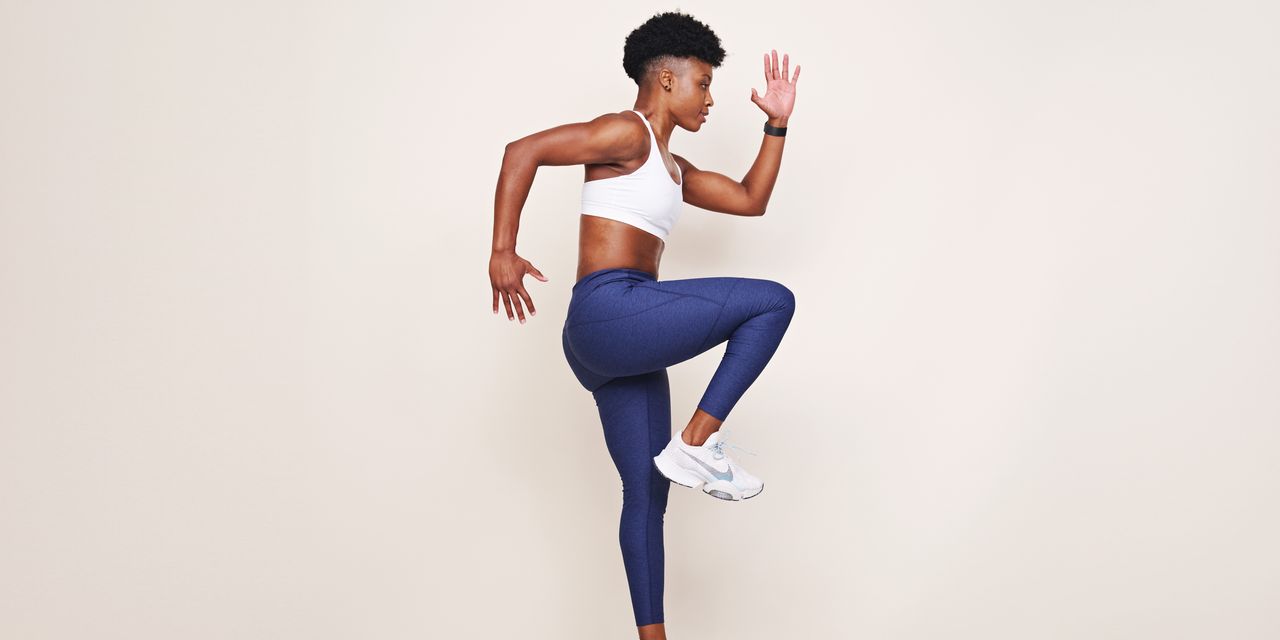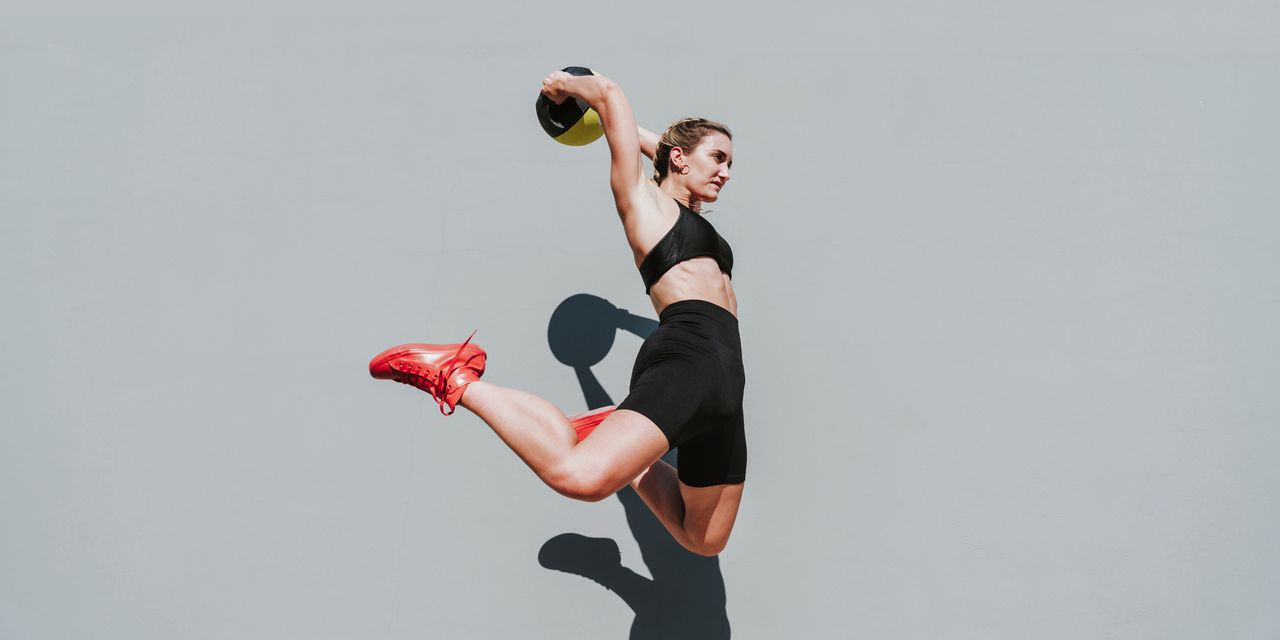All Your Little Questions About the US Open and Tennis in General, Asked and Answered

The US Open ranks as one of the most highly anticipated sports events of the year, and for good reason: How many other events pair 120-mph serves, grunts that reverberate around the stadium, and surprising celebrity sightings (hello, Traylor)?
The main competition—which kicks off in earnest on August 24 at the USTA Billie Jean King National Tennis Center in Queens, New York, and ends on September 7—is a spectacle, even if you don’t know a damn thing about the sport. But if you’re not a major tennis fan, it’s easy to get lost, especially given how fast it all moves. Why are coach-player interactions on the court so weirdly secretive? Who are those random people sprinting back and forth across like their lives are on the line? And did the announcers seriously just shush the crowd?!
Don’t fret: We’ve compiled (and answered) all your little questions—big, small, silly, strange—about the US Open and tennis in general as the tournament approaches.
1. Why are tennis balls neon yellow?
Tennis balls are teeny-tiny compared to a court—and with how fast play moves among pros, it’s a miracle we can see the little things at all. But that’s completely by design. From the 1800s up until 1972, balls were black or white, but when the general public began to tune into televised tennis in higher numbers during the ’70s, and color TV started to emerge, some broadcasters and producers—like the famed British naturalist David Attenborough, per the Associated Press (AP)—wanted to improve the watching experience. So the International Tennis Federation formally introduced the glowing, neon-yellow balls we know today to help make the game more visible to viewers. (Of course, Wimbledon didn’t change their balls until the mid-’80s because…Wimbledon.)
2. Where do all the extra balls go after the tournament is over?
The Open goes through roughly 100,000 Wilson balls, many of which find second lives through various recreational and youth sports orgs throughout the country. Some of them will be donated to Recycleballs, a nonprofit that uses the rubber to create other items, like equestrian footing (the spongy surface of horse show arenas), playgrounds, and even tennis courts.
3. Speaking of balls: Who are the
“ball people” you see furiously sprinting across the court, and how the heck did they get that job?
In most pro tennis matches, it’s hard not to notice the serious-faced people (who aren’t players) crouching, leaping back and forth, and generally doing *the most.* But as anyone who’s ever played a tennis match with a friend and found themselves wasting half of their energy chasing down stray balls knows, this role is essential in keeping the match seamlessly moving. In fact, you have to apply to try out to be a ball person, and the audition includes skills like passing to players as well as running, sprinting, and switching directions (for roughly 90 minutes). The moment players drop their bags on the court, for example, the ball crew has mere seconds to sprint to their positions at either the ends or middle of the court.
In fact, SELF staffer Caroline Tien even tried her own hand at ballgirling for the US Open last July—and she can confirm it’s probably more physically demanding than you may think. Between the blistering summer heat and the nonstop pace of the drills, the experience doubled as a sweat session to rival any Pilates class or interval run. Ultimately, a ball crew supervisor told her, only around one in 15 candidates are extended an offer.
Courtesy of Ralph Lauren
4. Wait so…what’s the score?
Here’s a quick breakdown of some important tennis terms you should know:
- In tennis, certain points are paired with names. Love = zero points, 15 = the first point, 30 = the second point, 40 = the third point, and game = the fourth point. (A player has to score at least four points to win a game.)
- The term all refers to a tied score. So if each player scored a single point, the score would be 15-all.
- If both players scored three points each (40-40), that’s called “deuce.”
- If the person serving wins the point after deuce, it’s called “ad-in” (or “your advantage”). Then, if they score another point while it’s ad-in, they win the game. But if they lose the deuce point, it’s called “ad-out.” If the other player scores the next point as well, they win the game.
Honestly, “How does tennis scoring work?” is not a little question, but we have a full guide to help explain it that you should read.
5. Are women allowed to wear shorts?
You’ll probably see a lot of women players wearing tennis skirts at the tournament, but they don’t have to. In fact, the US Open dress code is actually pretty lax in comparison to other big tournaments (like Wimbledon, which mandates that players’ uniforms must be all-white, down to their shoes)—and the pros have taken the opportunity to choose playful ensembles that show off their personalities. Famously, 20-year-old Serena Williams wore an all-black Puma catsuit during the 2002 Open.
There were definitely some notable outfit and accessory choices in last year’s play, too (see: Jessica Pegula’s armpit cutouts, Sloane Stephens’s delicate diamond necklace, or Marta Kostyuk’s neon-yellow dress), but Naomi Osaka’s huge “Brat” green bows emerged as the undisputed champion. Going into the first round of the 2024 Open, Osaka, a four-time Grand Slam champion (and two-time US Open winner), showed up to play Jelena Ostapenko wearing a bow-covered bomber jacket, frilly green skirt, and matching tennis dress—a custom-made, cottage-core-y collab between Nike and the Japanese designer Yoon Ahn. Even her headphones, sneakers, and tennis bag were adorned.
When asked about the distinctive look in her post-match interview, Osaka described it as “maximalist” and said it was inspired by Harajuku style. In the second round of the tournament (which ended in a loss to Karolina Muchova), she debuted a black version of the same getup. Speaking to The New York Times, she explained that dressing up helps boost her mental health. “When I wear what I feel is a good outfit, I definitely feel more comfortable,” she said.
Sarah Stier/Getty Images
Ronald Martinez/Getty Images
6. Where do the competitors—namely women in skirts—put their tennis balls during play?
Speaking of tennis skirts, if you’ve ever donned one before, you probably already know the answer: There are discreet little pockets in most garments that can hold a few balls. Still, as SELF’s fitness director, Christa Sgobba, has complained in the past, “Our tennis uniforms in high school did not have pockets!” (So safe to say it’s not a universal requirement!)
7. So why is Wimbledon’s dress code so freaking strict?!
Get ready to roll your eyes so far back into your head that they become permanently lodged there. In an interview with BBC Culture from 2023, Robert Lake, author of A Social History of Tennis in Britain, said this: “White hides sweat the best, looks clean, sharp, and tidy, representing goodness (aesthetically) and, given cricket connections, also reflects upper-middle-class leisure historically.” (BRB, making a mental note to watch this year’s Open wearing my tackiest, most colorful Spandex outfit in a foam Statue of Liberty hat with Cowboy Carter streaming in the background.)
8. Do US Open competitors win prize money?
While the 2024 Open boasted the largest cash allotment for players in tournament history ($75 million, a 15% increase from 2023), the 2025 event sets the bar even higher: $90 million. The men’s and women’s singles champs will receive $5 million apiece, an increase of almost $1.5 million from last year’s $3.6 mil. According to Brendan McIntyre, the senior director of corporate communications for the US Open, all four Grand Slam events offer equal prize money for men and women. However, the US Open was the first to make that call (thanks in no small part to the efforts of tennis legend Billie Jean King and other activists), all the way back in 1973.
But it’s not just the victors who take home a check: Second-place winners earn $2.5 million, semifinalists earn $1.26 million, quarterfinalists earn $660,000, and so on. Even athletes who lose in the first round get a little (or not-so-little) something: $110,000. (Not bad!)
9. Do fans have to be quiet during US Open matches?
The Open’s more casual look in comparison to other big tennis tourneys is reflected in its overall attitude too—the Arthur Ashe Stadium gets famously rowdy. “It’s the loudest and probably the most humid conditions of all center courts of all four Grand Slams,” Novak Djokovic told reporters during a press conference in 2023. That year, the Open welcomed 957,387 fans back for the 20-day event, an 8% increase in attendance from 2022—and those people like to party, often to the players’ frustration. At the 2022 tournament, Australian Nick Kyrgios claimed that a spectator smoking weed caused his asthma symptoms to kick in.
Still, that doesn’t mean fans can lose their shit in their seats entirely—you agree to a Guest Code of Conduct when you buy a ticket. Basically, you need to “be respectful of others” and “not engage in inconsiderate or inappropriate behavior” that’s “including, but not limited to, using foul, abusive, offensive, threatening, or inappropriate language or gestures, fighting, throwing objects, and any other behavior that creates a disruptive atmosphere or detrimental experience for players, officials, and other guests.” Of course, whether or not that warrants a “SHHH!” from the officials will really depend on how disruptive the offense is.
Sometimes, players become visibly irritated on court in response to perceived distractions. During a tight match against World No. 1 Aryna Sabalenka at the Cincinnati Open on August 11, per Today, Great Britain’s Emma Raducanu had a tense exchange with an umpire when she complained about a crying baby in the stands. When the official replied, “It’s a child. Do you want me to send the child out of the stadium?,” people in the audience responded with a chorus of “Yes”-es. The incident sparked online debate about whether Raducanu’s request was reasonable, and whether parents should bring small children to quiet (or at least quiet-ish) events at all.
10. Can coaches talk, or signal to, players in the stands?
Up until recently, coaches couldn’t communicate with players in the four major Grand Slam tourneys. (Those are the major pro tennis competitions, held annually in Australia, France, Britain, and the US, respectively.) This policy indirectly sparked a lot of controversial moments during high-profile matches, including one involving Serena Williams back at the 2018 Open. In her final loss to Naomi Osaka, the match umpire spotted Williams’s coach gesturing to her from the stands, which led to Williams receiving a code violation. Later on in the match, she smashed her racket and argued with the umpire. The combo caused Williams to receive a point penalty. The violations didn’t cause her to lose the game, per se, but it sparked a whole convo about the old no-coaching rule in tennis.
Anadolu/Getty Images
Starting in 2022, the Association of Tennis Professionals announced it would start to allow some “off-court coaching” at select tournaments, including the US Open. While the coach can’t come down to the court and walk a player through a complex strategy, they *can* throw out a few words or short phrases from designated seats (and if the player is at the same end of the court). They’re also able to dole out non-verbal instructions, like hand signals, per the 2025 Official Grand Slam Rule Book.
11. Why are there penalties for smashing a racket?
Basically, all players at Grand Slam tournaments are subject to fines up to $100,000 for any individual violation of the “Unsportsmanlike Conduct” policy, per the rule book. There’s nothing in the text that spells out racket-smashing specifically—just “circumstances that are flagrant and particularly injurious to the success of a tournament, or are singularly egregious”—so it’s kind of up to officials at the match to determine how offensive a behavior actually is.
12. What’s the deal with racket stringing?
Players at this year’s tournament are allowed five free racket stringings per round. That’s a big deal—how tightly, and with how much tension, a racket is strung can make a major difference in the speed and style of play. Per the US Open, the less tension on the strings, the more power the racket can put forth. The more tension on them, however, the more control and precision a player has.
13. What’s a Honey Deuce?
Just like the Kentucky Derby has the mint julep, the US Open has its own signature cocktail: the Honey Deuce. Here’s the backstory: While at a farmer’s market, Nick Mautone, a restaurateur and mixologist, noticed that honeydew melon balls bore a striking resemblance to tennis balls. So in an attempt to create a special drink for the 2006 tournament, Mautone garnished a vodka-lemonade-raspberry liquor cocktail with the melon balls. The rest is history!
Monica Schipper/Getty Images
14. Did the tennis bracelet gain popularity because of the Open?
Kind of! Like neon-colored tennis balls, this origin story goes back a few decades. Legend has it that pro tennis star Chris Evert used to wear a dainty string of diamonds on her wrist during matches, and when it flew off and temporarily halted play at the 1978 US Open, spectators dubbed it a “tennis bracelet.”
PA Images Archive/Getty Images
15. Why does Anna Wintour love tennis?
ICYDK, our boss is a big, big tennis buff (in addition to being a regular player). In a 2021 interview with Kara Swisher, she mentioned that she’d “like to run the Tennis Channel” in her next life. She’s also good friends with several of the sport’s big names, including Roger Federer. “I want to raise a racket to Roger—in respect, in hope, in gratitude—as he embarks on the next phase of an extraordinary adventure,” she wrote in a 2022 essay for Vogue upon news of his retirement. “Some people are as irreplaceable in life as they are in sports, and Roger is a proven champion on both counts.”
Clive Brunskill/Getty Images
Anna Wintour, Roger Federer, and Carla Bruni attend the press conference for the 2023 Met GalaMichael Loccisano/Getty Images
Plus, the US Open is just a damn good time. Like the rest of us nonathletes, Wintour likely doesn’t mind the momentary respite from work to get sucked into the cheers, grunts, raw emotion, and festive, fruity drinks that make it such a uniquely enjoyable experience.
Related:
- Tennis Star Iga Swiatek Swears By Pasta With Strawberries—Here’s What a Dietitian Thinks
- Why Madison Keys Was ‘No Longer Searching for Validation’ Even Before Winning the Australian Open
- All the Reasons to Stan Coco Gauff—Even If You Don’t Watch Tennis
Get more of SELF’s great sports coverage delivered right to your inbox—for free.




